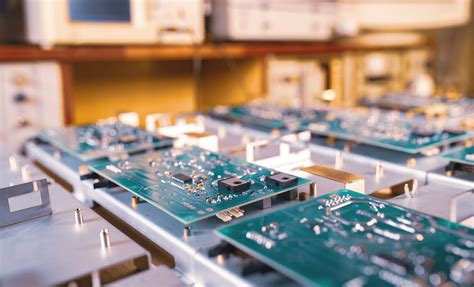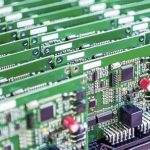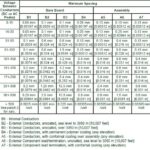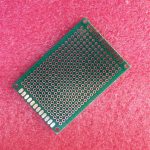Introduction to Thru Hole PCB assembly
Thru hole PCB assembly is a traditional method of assembling printed circuit boards (PCBs) where components are inserted into drilled holes on the board and soldered onto the opposite side. This method has been widely used for decades and remains a reliable choice for many electronics manufacturers. In this article, we will explore the world of thru hole PCB assembly companies, their services, advantages, and factors to consider when choosing a company for your PCB assembly needs.
What is Thru Hole PCB Assembly?
Thru hole PCB assembly, also known as through hole assembly, is a process where electronic components are mounted on a PCB by inserting their leads through drilled holes on the board. The leads are then soldered to the copper pads on the opposite side of the board, creating a strong mechanical and electrical connection. This assembly method is suitable for components with wire leads, such as resistors, capacitors, and connectors.
Advantages of Thru Hole PCB Assembly
-
Mechanical Strength: Thru hole components provide a stronger mechanical connection to the PCB compared to surface mount components, making them more resistant to vibration and physical stress.
-
Ease of Repair: Thru hole components are easier to replace and repair manually, as they can be desoldered and removed from the board without specialized equipment.
-
Compatibility with Larger Components: Thru hole assembly is suitable for larger components that cannot be easily adapted to surface mount technology, such as transformers and power connectors.
-
Lower Initial Setup Costs: Thru hole assembly requires less sophisticated equipment compared to surface mount assembly, resulting in lower initial setup costs for manufacturers.
Thru Hole PCB Assembly Process
The thru hole PCB assembly process typically involves the following steps:
-
PCB Design and Fabrication: The PCB is designed using CAD software, and the design files are sent to a PCB fabrication company to manufacture the bare board with drilled holes.
-
Component Insertion: The components are inserted into the drilled holes on the PCB, either manually or using automated insertion machines.
-
Soldering: The inserted components are soldered to the copper pads on the opposite side of the board, usually using wave soldering or selective soldering techniques.
-
Inspection and Testing: The assembled PCB undergoes visual inspection and electrical testing to ensure proper functionality and adherence to quality standards.
-
Cleaning and Finishing: The PCB is cleaned to remove any flux residue and may receive additional finishing treatments, such as conformal coating or potting, depending on the application requirements.

Choosing a Thru Hole PCB Assembly Company
When selecting a thru hole PCB assembly company for your project, consider the following factors:
1. Experience and Expertise
Look for a company with extensive experience in thru hole PCB assembly and a proven track record of delivering high-quality products. Inquire about their expertise in working with different PCB materials, component types, and assembly techniques.
2. Quality Control and Certifications
Ensure that the company has a robust quality control system in place, including inspections at various stages of the assembly process. Check if they hold relevant certifications, such as ISO 9001, IPC-A-610, or UL, which demonstrate their commitment to quality and adherence to industry standards.
3. Manufacturing Capabilities and Capacity
Assess the company’s manufacturing capabilities, including their equipment, automation level, and production capacity. Determine if they can handle your project’s specific requirements, such as high-volume production, quick turnaround times, or specialized assembly techniques.
4. Customer Support and Communication
Choose a company that offers excellent customer support and maintains clear communication throughout the project. Look for responsiveness, technical support, and a willingness to collaborate closely with you to ensure your project’s success.
5. Cost and Lead Time
Consider the company’s pricing structure and lead times for thru hole PCB assembly services. While cost is an important factor, avoid compromising on quality for the sake of lower prices. Strike a balance between competitive pricing and reliable service to ensure the best value for your investment.
Top Thru Hole PCB Assembly Companies
Here are some well-known thru hole PCB assembly companies that offer reliable services:
-
ABC Electronics: With over 20 years of experience, ABC Electronics specializes in high-quality thru hole PCB assembly for a wide range of industries. They offer flexible manufacturing options and have a strong focus on customer satisfaction.
-
XYZ Manufacturing: XYZ Manufacturing is a leading provider of thru hole PCB assembly services, known for their state-of-the-art facilities and advanced automation capabilities. They excel in high-volume production and offer competitive pricing.
-
123 Assembly: 123 Assembly is a trusted name in the thru hole PCB assembly industry, offering a comprehensive range of services, including design support, component sourcing, and testing. They are committed to delivering superior quality and timely project completion.
-
QRS Technology: QRS Technology is a one-stop solution for thru hole PCB assembly, providing end-to-end services from PCB fabrication to final assembly and testing. They have a team of experienced engineers and utilize cutting-edge equipment to ensure the highest quality standards.
-
LMN Electronics: LMN Electronics is known for their expertise in thru hole PCB assembly for complex and mission-critical applications. They offer customized solutions, stringent quality control, and a focus on long-term partnerships with their clients.
| Company Name | Years of Experience | Key Features |
|---|---|---|
| ABC Electronics | 20+ | Flexible manufacturing, customer focus |
| XYZ Manufacturing | 15+ | Advanced automation, high-volume production |
| 123 Assembly | 25+ | Comprehensive services, superior quality |
| QRS Technology | 10+ | End-to-end solutions, experienced team |
| LMN Electronics | 30+ | Complex applications, customized solutions |
Note: The information provided in the table is for illustrative purposes only and does not represent actual companies or their specific features.
Frequently Asked Questions (FAQ)
1. What is the minimum order quantity (MOQ) for thru hole PCB assembly?
The minimum order quantity for thru hole PCB assembly varies from company to company. Some companies may accept small prototype runs with low MOQs, while others may require higher quantities for cost-effective production. It’s best to inquire directly with the company about their specific MOQ policies.
2. How long does thru hole PCB assembly typically take?
The lead time for thru hole PCB assembly depends on various factors, such as the complexity of the design, the number of components, and the company’s production capacity. Generally, lead times can range from a few days for simple projects to several weeks for more complex assemblies. Discuss your project’s timeline with the company to get a more accurate estimate.
3. Can thru hole PCB assembly companies source components for my project?
Yes, many thru hole PCB assembly companies offer component sourcing services as part of their turnkey solutions. They can procure components from their established supplier networks, ensuring quality and availability. However, it’s important to provide a detailed bill of materials (BOM) and discuss any specific component requirements with the company.
4. What file formats are required for thru hole PCB assembly?
When working with a thru hole PCB assembly company, you’ll typically need to provide various design files, including:
- Gerber files: These files contain the PCB layout information, including the copper layers, solder mask, and silkscreen.
- Drill files: These files specify the locations and sizes of the drilled holes on the PCB.
- Assembly files: These include the component placement information, such as the pick-and-place file and the bill of materials (BOM).
Consult with the company for their specific file format requirements and any additional documentation they may need.
5. How can I ensure the quality of the assembled PCBs?
To ensure the quality of the assembled PCBs, consider the following:
- Choose a reputable thru hole PCB assembly company with a proven track record of delivering high-quality products.
- Discuss your quality requirements and expectations with the company upfront, including any specific testing or inspection procedures you require.
- Provide clear and comprehensive design files, including a detailed bill of materials (BOM) and assembly instructions.
- Request regular progress updates and communicate closely with the company throughout the project to address any issues promptly.
- Perform thorough testing and inspection of the assembled PCBs upon receipt to verify their functionality and adherence to your specifications.
Conclusion
Thru hole PCB assembly remains a reliable and cost-effective method for assembling printed circuit boards, particularly for projects that require strong mechanical connections and compatibility with larger components. When choosing a thru hole PCB assembly company, consider factors such as experience, quality control, manufacturing capabilities, customer support, and cost.
By partnering with a reputable thru hole PCB assembly company and maintaining clear communication throughout the project, you can ensure the successful production of high-quality PCBs that meet your specific requirements. Whether you need prototypes or high-volume production, thru hole PCB assembly companies offer the expertise and resources to bring your electronics projects to life.






Leave a Reply